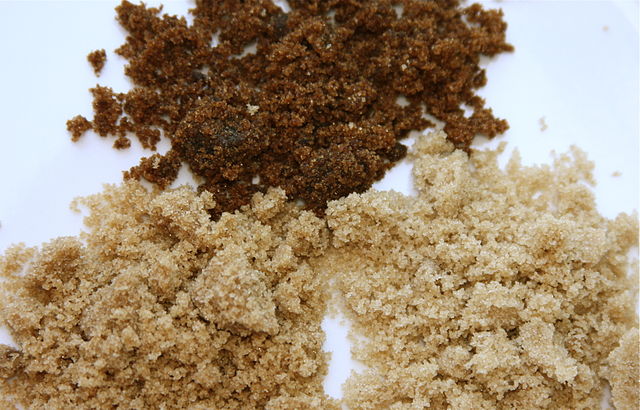Why should you be baking with Khandsari Sugar and care if the baking chocolate you are using is sweetened with it? Read on..
Muscovado, also khandsari and khand, is a type of partially refined to unrefined sugar with a strong molasses content and flavour made from thickened sugar cane syrup. It is neither bleached nor contains harmful chemicals and additives and hence considered a less processed substitute to white sugar. It is dark brown in colour usually. Khandsari and Gur (jaggery) are the most popular forms of the traditional sugars in northern India.

The largest producer and consumer of khandsari is India. The English name “muscovado” is derived from a corruption of Portuguese açúcar mascavado (unrefined sugar).The Indian English names for this type of sugar are khandsari and khand (sometimes spelled khaand). Nearly two thirds of the total sugarcane produced had been used for manufacturing of the traditional sugars in 1930’s. However, after introduction of sugar refinery mills and their significant growth and increased demand for white sugar associated with increase in per-capital income among the population, the demand for the traditional sugars declined. By 2000, only 32.5% of the total sugarcane produced in India was used for manufacturing of Gur and Khandsari.
Muscovado a.k.a Khandsari sugar sugar is unrefined cane sugar that contains natural molasses. It has a rich brown color, moist texture, and toffee-like taste. It’s commonly used to give confections like cookies, cakes, and candies a deeper flavor but can also be added to savory dishes. This is the reason why Kocoatrait chocolate couvertures have a deeper and unique toffee like note. This helps bakers add a slightly unique flavour to their final products. This is perhaps the main reason you should be Baking with Khandsari Sugar.
The use of khand in India in making sweets has been traced to at least 500 BC, when both raw and refined sugar were used. Along with gur, khandsari unrefined sugar is India’s traditional sweetener,[28] commonly used in traditional recipes for masala chai (spiced Indian tea), eating with roti by mixing with melted ghee, traditional Indian sweets that require sugar such as kheer (Indian rice pudding), gur or khand chawal (sweetened rice) or laddu. Khandsari (muscovado) is used in traditional Ayurveda medicine to aid blood purification, digestion, bone health and the lungs.
Having said the above, our verdict is as follows: While it is true that khandsari has more nutritional value than white sugar. But let us be real. One should not be eating sugar for the vitamins and minerals! The fact is that khandsari is minimally processed and has a unique flavour profile which makes it interesting to work with. This should be the reason you should consume it. Further, there has always been a debate about bone char being used to refine sugar. We just could not get around proving that, so we decided to avoid the problem instead of solving it ! We do not encourage the health claims associated with khandsari. However, using minimally processed and safe ingredients is always something we are eager to do Thats why we buy only USDA organic certified khandsari sugar for use in Kocoatrait chocolate products.
https://www.longdom.org/open-access/alternative-and-supplementary-health-model-on-traditional-sugars.pdf
https://en.wikipedia.org/wiki/Muscovado
Michael Krondl, Sweet Invention: A History of Dessert, Chicago Review Press, ISBN 978-1556529542, pp. 34–35



